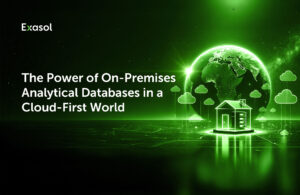
Advantages of On Premise Software Deployment
In the realm of software solutions, the on prem vs cloud debate is ongoing. Each has its merits, but today we focus on on premise software and deployment.
On prem software offers a unique set of advantages. They provide businesses with full control over their software environment. This control can be a game-changer for many organizations.
Security and compliance are other key benefits. On premise deployment can offer enhanced security measures and easier compliance with industry regulations. This is crucial in sectors with stringent data privacy laws.
Cost predictability is another advantage. With software on-premise, businesses can avoid recurring subscription fees, leading to potential long-term savings.
Performance and reliability are also significant factors. On-premises solutions can offer superior performance for certain applications and are less dependent on internet connectivity. In this article, we delve into these advantages and more, providing insights to help you decide if on premises software solutions are the right choice for your business.
Need help with on-prem?
Contact us for expert guidance tailored to your business.
What is On Premise Software?
On premise software solutions are applications installed and run on computers within an organization’s physical location. They allow businesses to have complete control over their software and data. This control is essential for companies that prioritize security and compliance.
Key characteristics of on-premises deployment include self-management, dedicated hardware, and full oversight. These solutions require businesses to manage their infrastructure, providing unique advantages in tailoring and customization. This responsibility necessitates a skilled IT team to maintain and update the systems.
Contrasting with cloud-based solutions, on-premises software does not rely on external servers or internet connectivity for function. This independence is valuable for companies that experience unstable internet connections. It ensures constant access to critical applications without reliance on external factors.
Comparing the two approaches, the following key differences stand out:
- Data Control: On-premises retains direct control, while cloud depends on third-party providers.
- Costs: On-premises entails upfront investment, while cloud involves ongoing subscription fees.
- Customization: On-premises offers extensive customization, whereas cloud solutions may be limited by provider frameworks.
Understanding these aspects helps businesses choose the right software strategy. Each option provides specific benefits, aligning best with particular organizational needs and priorities.
“On-premises software can act as the backbone for hybrid strategies, where critical data stays on-site while non-sensitive workloads leverage cloud solutions.”
Mathias Golombek, CTO, veteran in the data industry
Full Control and Customization
On-premises software provides unparalleled opportunities for customization. Organizations have the freedom to modify software to suit their specific business processes. This level of customization can be crucial for companies with unique operational needs that off-the-shelf solutions fail to address.
One of the standout features of on-premises software is its ability to integrate seamlessly with existing systems. Businesses can tailor their software landscapes without disruption. Integration ensures smooth data flow between different systems and enhances overall operational efficiency.
Compatibility with legacy systems is another significant benefit of on-premises. Many organizations rely on older software or equipment that may not work well with newer cloud-based applications. On-premises solutions can be adapted to work alongside these systems, preserving existing investments and minimizing disruptions.
Furthermore, on-premises solutions offer control over software updates and development. Companies can decide when and how to implement changes. This flexibility allows businesses to align updates with their internal schedules and minimize downtime.
Consider these key benefits of on-premises customization:
- Tailored Workflows: Customize software to fit specific processes and improve productivity.
- Integrated Environment: Seamlessly connect with established systems, enhancing existing technology investments.
- Legacy Support: Maintain compatibility with older systems, avoiding costly system overhauls.
- Controlled Updates: Schedule changes based on operational needs, reducing impact on daily activities.
These aspects of full control and customization enable businesses to operate precisely as required. For many organizations, this ability to shape their software environment according to unique needs represents a competitive advantage that cloud offerings cannot match. In fact, there are news reports that claim “83% of enterprise CIOs plan to repatriate at least some workloads in 2024, a significant jump from 43% in late 2020.”
Enhanced Security and Compliance
One of the significant advantages of on-premises software is the heightened level of security they offer. With on-premises systems, businesses can maintain data sovereignty by keeping control over their data within their own infrastructure. This control helps protect sensitive information from external threats and unauthorized access.
Privacy is a critical concern for many industries today. On-premises software ensures sensitive data resides within the company’s premises. This setup minimizes the risk of data breaches associated with third-party servers, thereby maintaining high confidentiality.
Compliance with industry-specific regulations is another area where on-premises solutions excel. Industries like healthcare and finance are subject to rigorous standards regarding data handling. On-premises deployment can be tailored to meet these specific regulatory requirements, reducing the risk of compliance failures.
Having in-house data security measures empowers organizations to design security protocols tailored to their precise needs. Businesses can implement custom firewalls, encryption practices, and access controls. This tailored approach allows companies to respond swiftly to new threats and adjust security measures as needed.
Consider these security and compliance benefits:
- Data Sovereignty: Maintain control over data within company infrastructure.
- Enhanced Privacy: Protect sensitive information from exposure to third-party environments.
- Regulatory Compliance: Align software with industry-specific legal requirements, avoiding costly penalties.
- Custom Security Measures: Design and implement unique security protocols to protect against emerging threats.
In summary, the ability to configure detailed and comprehensive security frameworks makes on-premises solutions an attractive choice for industries where data security and regulatory compliance are paramount. Such capabilities provide peace of mind and assurance that sensitive information is well-protected.
Cost Predictability and Long-Term Savings
Financial planning is crucial for any business looking to succeed. On-premises software offers predictable costs, which can be very advantageous. Unlike cloud-based services with recurring subscription fees, on-premises systems usually have a one-time licensing cost. This predictability in expenses allows companies to allocate budgets without worrying about fluctuating monthly payments.
While the initial costs of on-premises software may appear higher, they can lead to significant savings over time. Many organizations find that owning their software outright, rather than renting access, offers better value. This ownership can reduce the long-term Total Cost of Ownership (TCO), providing financial benefits as time progresses.
In addition to predictable expenses, on-premises solutions allow businesses to optimize resource allocation. By avoiding the need for ongoing subscription payments, companies can redirect funds toward other critical areas. These savings can be reinvested into their operations to drive growth and innovation.
Furthermore, the elimination of recurring fees enables organizations to perform cost-benefit analyses more effectively. This financial clarity facilitates smarter decision-making regarding IT investments and upgrades.
In summary, the financial benefits associated with on-premises software include:
- Stable Costs: Avoid recurring subscription fees by opting for a one-time licensing model.
- Long-Term Savings: Realize cost advantages over time, contributing to a lower total cost of ownership.
- Budget Flexibility: Reinvest saved funds into innovation and other strategic initiatives.
Overall, the financial predictability and potential for long-term savings make on-premises software a financially sound choice for many businesses.
Performance and Reliability
On-premises software solutions are renowned for their performance optimization capabilities. Unlike cloud-based systems that share resources among multiple tenants, on-premises dedicate computing power to a single organization. This allows businesses to achieve optimal performance, especially for applications that require intensive processing power or deal with large datasets.
A key advantage of on-premises software is the reduced dependency on internet connectivity. Businesses relying on cloud solutions are vulnerable to internet downtimes, which can impact operations and lead to productivity losses. With on-premises systems, businesses can function smoothly even with unstable or limited internet access, ensuring operational continuity.
By managing software within their infrastructure, organizations can leverage enhanced control over system updates and performance tuning. The ability to tailor performance settings to specific applications ensures that software operates at peak efficiency, aligning with business goals and user needs.
In summary, the performance and reliability benefits of on-premises software include:
- Dedicated Resources: Ensures optimal performance, particularly for resource-intensive applications.
- Internet Independence: Eliminates reliance on internet connectivity for continued operation.
- Customized Optimization: Facilitates performance tuning and updates tailored to specific business applications.
In essence, on-premises software provides businesses with the performance reliability necessary for mission-critical tasks, minimizing disruptions and maximizing efficiency.
Scalability and Flexibility
On-premises software offers a high degree of flexibility, allowing businesses to customize systems according to their specific needs. Unlike cloud solutions, where one size fits all, on-premises enables tailored configurations. This customization helps companies incorporate unique workflows and processes, maximizing efficiency and value.
Scalability is another significant advantage of on-premises deployment. Organizations can expand their software capabilities at their own pace, guided by their evolving business requirements. As companies grow, they can upgrade hardware and software components without the constraints of a shared environment, ensuring that the infrastructure supports increased workloads.
A tailored approach to software deployment can provide numerous benefits, including:
- Adaptability to Change: Easily modify and adjust systems as business needs evolve.
- Incremental Scaling: Gradual scaling options that align with business growth and budgetary considerations.
- Business-Specific Customization: Design solutions that reflect the company’s unique operations and industry demands.
In conclusion, on-premises software offers scalability and flexibility essential for dynamic businesses, ensuring that systems continue to meet specific operational goals and support growth.
Disaster Recovery and Data Resilience
On-premises software is adept at providing robust disaster recovery capabilities. Organizations can design their systems with built-in resilience, ensuring critical operations are uninterrupted even during unexpected events. This proactive approach supports business continuity by safeguarding valuable data.
A significant advantage of on-premises solutions is the ability to implement comprehensive backup strategies. Businesses can tailor their backup routines and schedules, selecting the best frequency and storage solutions to suit their needs. This level of control ensures data is consistently protected and easily recoverable.
Key benefits of robust backup strategies within on-premises systems include:
- Customized Recovery Plans: Develop and test personalized recovery plans to minimize downtime.
- Regular Data Backups: Schedule frequent backups to prevent data loss during mishaps.
- Enhanced Data Protection: Employ secure storage solutions for backup data, mitigating risks associated with data breaches.
By focusing on disaster recovery and data resilience, on-premises software empowers organizations to protect vital information and maintain smooth operations, even in challenging scenarios.
Case Studies: Success with On-Premises Solutions
Many businesses have thrived by adopting on-premises software. For instance, a healthcare organization Piedmont Healthcare, facing scalability issues, opted for on-premises software. With more than 1.8 trillion data points, the company accelerated its insights by 1,000x. This switch allowed them to perform over 40,000 queries per hour, ensuring faster insights.
Another example is a retail company Flaconi with heavy reliance on legacy systems that reached its limit. By selecting an on-premises solution, they achieved seamless integration with their existing infrastructure. This integration enhanced their real-time analytics and operational efficiency, leading to considerable cost savings. In the financial sector, Sparkassen-Finanzportal GmbH, a German customer care representative for one of the most popular banks, chose on-premises software to address high data volumes. This decision provided enhanced customization opportunities, aligning software processes with the firm’s specific needs. This upgrade significantly improved their data management and compliance capabilities, demonstrating its effectiveness in supporting complex business environments.
Conclusion: Is On-Premises Right for Your Business?
On-premises software offers numerous strategic advantages, from enhanced security to cost predictability. They empower organizations with full control over their data and systems. These solutions provide customizable options that cater to specific regulatory and operational needs.
Decision-makers must weigh factors like upfront investment, IT expertise, and compliance requirements. By evaluating the unique demands and goals of their business, they can determine if on-premises solutions align with their strategic objectives. For many, the benefits of ownership, control, and tailored integration make on-premises software a compelling choice for long-term success.





